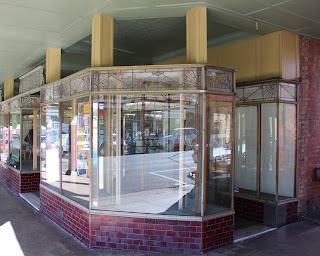A long stretch north then to Charters Towers, hundreds of kilometres to drive. We overnighted in a place called Belyando Crossing which has a population of five, all of whom serviced the petrol station, store, motel, campground and tourist information centre that operated there. The straight drive was a slow playing video of mean-eyed crows, swollen carrion, deeply cratered and dried out creek beds, and burnt eucalypts, with beef cattle sporadically bunched around feed bins, until we turned into ‘The Towers’ as it is affectionately known.
Charters Towers had its beginnings in 1871, when a young aboriginal boy, Jupiter Mossman, tripped over a lump of quartz, glistening after rain. Gold. And plenty of it. Thousands of miners soon invaded the area, throwing down their tents and tools and staking out a claim under the natural rocky tor that rises up out of the earth, which contributed to the ‘Towers’ in the name of the place.
Mines were pegged, gold lumps soon filled the drays and wheelbarrows that rattled down the dusty tracks that were to become the town streets. Vast fortunes were made. This was no ordinary gold find. Discoveries were stretching on, and on. The burghers, trying to keep law, order and a sense of community about the place, made decisions then, which today, leave Charters Towers a gem of a town for tourists to visit: one decision was that buildings fronting the main streets were to be of stone.
And so they were built. One being the extraordinary arched arcade at the top of town which turned into the stock exchange where ‘calls’ were made three times a day at the height of the boom. The arcade would often hold a thousand investors, bidders and onlookers enthralled, as small clumps of rock tinged with gold were sold off as shares to investors all over the world as miners sought capital to go deeper, wider, richer. Close to the Stock Exchange Arcade is the Australian Bank of Commerce: elegant and beautiful in its carved stone finery.
There followed the telegraph and post office building, the police station, mens clubs, gaming rooms, hotels, and more hotels; glass fronted shops with pressed metal ceilings and art deco facades, gorgeous fashionable homes for rich mine owners--as the gold kept on coming.
While all around were dusty streets filled with claim jumpers trying to muscle in, attempting any route to easy riches, so murder and mayhem were rampant in the dozens upon dozens of public houses set up right on top of the goldfields. All activities overlaid by the constant earth-throbbing noise from dozens of batteries ramming tons of lumpen rock all over town—so loud the thump could be heard for kilometres. And furtive silent killers took their deadly toll, as the town’s creek water was topped up with the massive doses of chemicals needed daily to extract the precious gold: cyanide and mercury: killers both. Miners desperately needed the water, but were literally going mad using it.
And, of course, the boom didn’t last. After twenty-five golden years, it shuddered, unwillingly, to a very slow death, the last battery finally closing in 1973--the tunnels under the town gradually filling with water.
Today, tourists are the town’s gold as there are ghost and gold tales aplenty to keep them coming here forever. The town fills with travellers most days of the year.
All is not lost underground, either. Technology has moved on. There have been new fields pegged out and new efficient ways to mine the gold worked out. And if all predictions are correct there is said to be more gold still to extract from the earth directly beneath Charters Towers than has been taken in the dozens of decades that have gone before. Future tales to tell.
 |
| Burnt and dried out |
 |
| Parked at the top of town in Charters Towers |
 |
| Stock Exchange Arcade designed by a Melbourne architect |
 |
| Australian Bank of Commerce |
 |
| Glass fronted shops |
 |
| Art deco advertising in glass |
 |
| Exquisite ironwork on the storefront |
 |
| Thornborough, a battery owner's home; now part of a boarding school |
 |
This beautiful home once serviced 15, 000 American servicemen
as a hospital during the war |
 |
| Tourists need this sign near the battery |










No comments:
Post a Comment